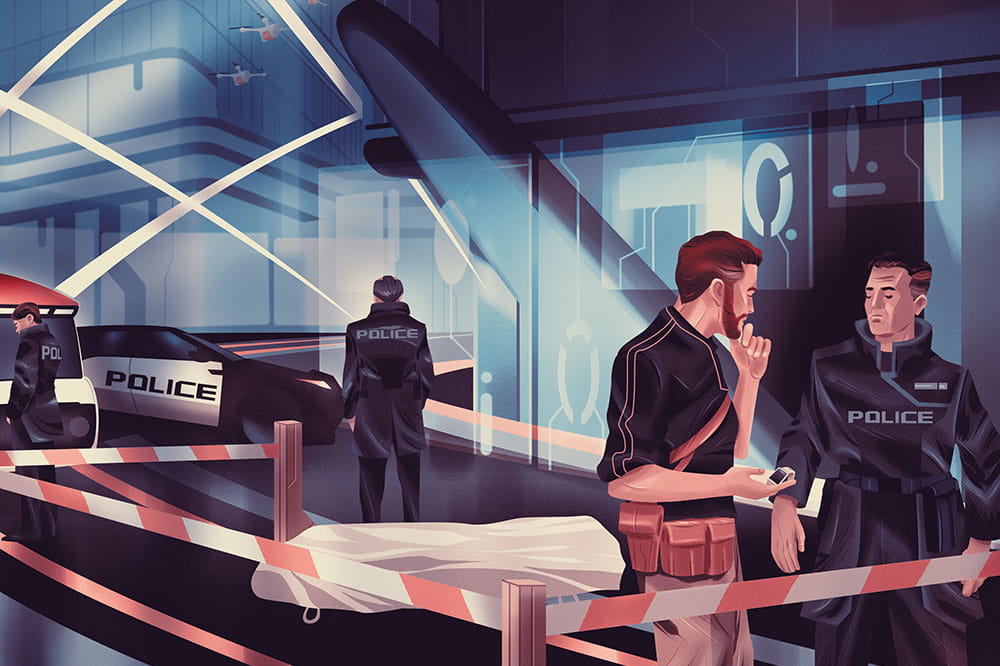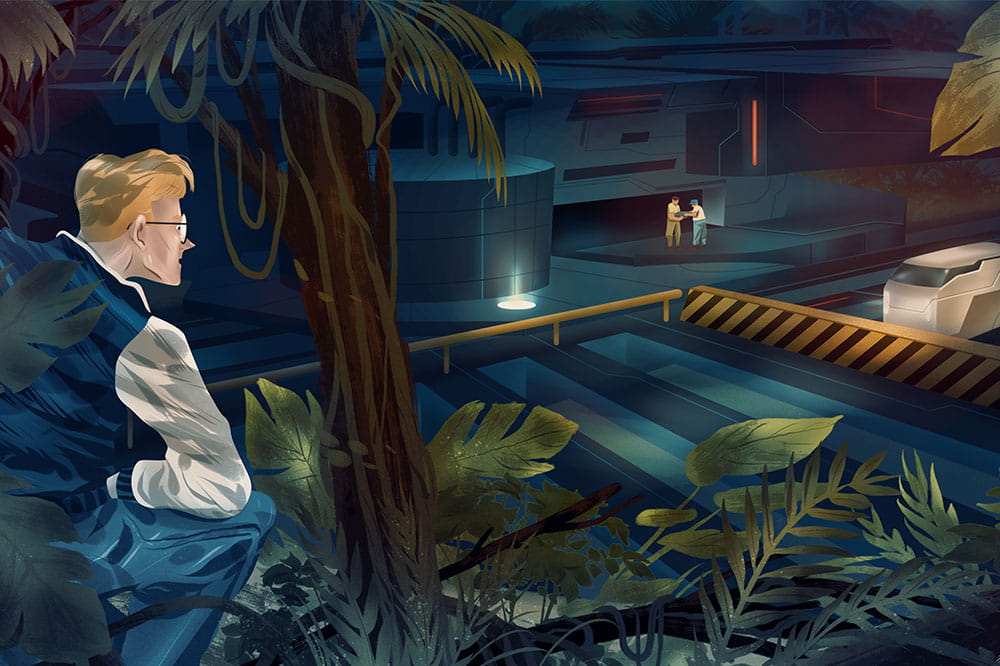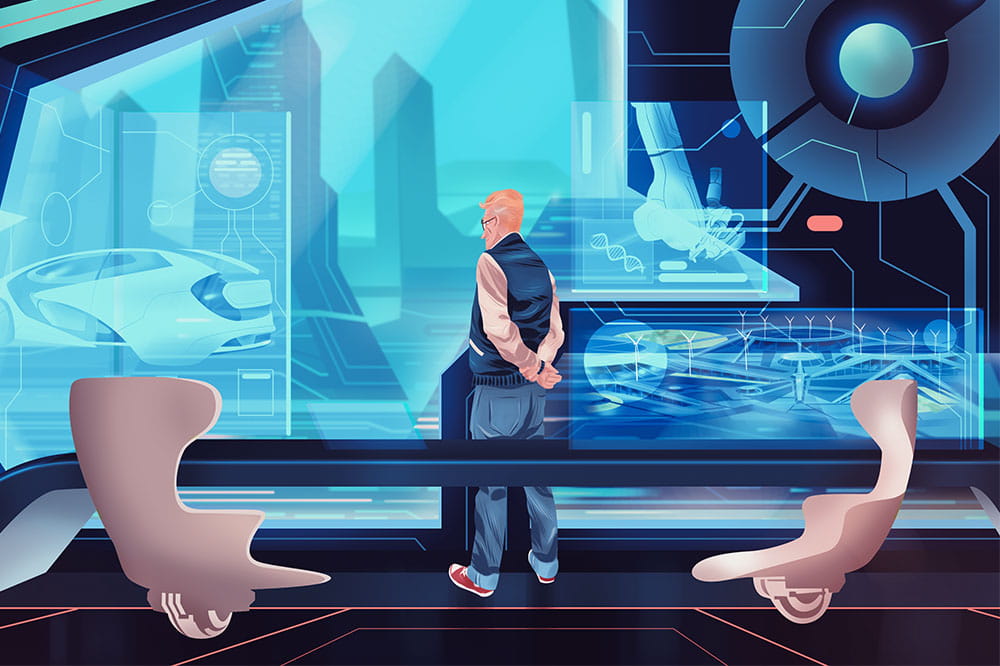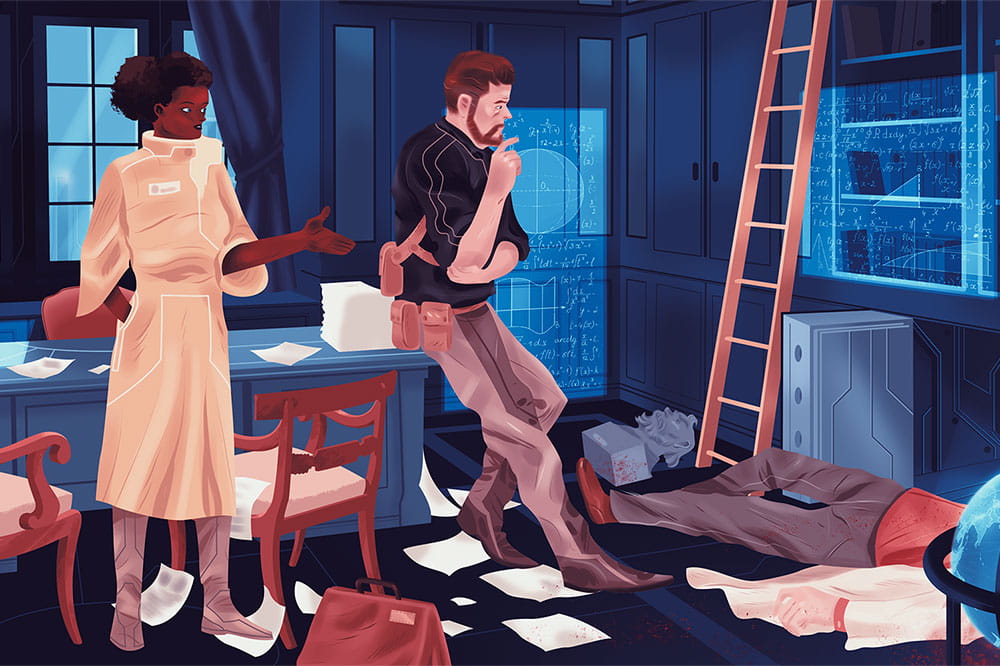Obtain news and background information about sealing technology, get in touch with innovative products – subscribe to the free e-mail newsletter.

20.07.2017 | Story
Traveling Into the Future
ESSENTIAL is launching a loose sequence of short stories, each of which is set in its own fictional future. Some of them have recurring characters and settings, and some stand on their own. The goal is to play with very different visions as creatively as possible and bring the reader along on a thought experiment: What form could our future take – and what would it mean to us?
Short Science Fiction Stories: Part 1
New Beginnings
It is July 19, 2045. Nero, a blogger, is on assignment for ESSENTIAL and about to start a trip around the world, which has taken the gloves off in the fight against climate change.
It is already light! I try to jump out of my berth and end up hitting my head. “Avar,” I say, in an irritated tone that I know she doesn’t like. “We’re late. I’m going to miss the launch.” The reply comes quickly. “Don’t worry, Nero. We’ve been on board for a while, and we still have half an hour before the opening. The launch takes a bit longer in the Kazakhstan sector. Have you forgotten that?" I redden slightly. “I’m sorry, Avar.”
But it still bothers me. Avar is not a person, even if she can talk. She is not even an object, but rather a partition on a server assigned to me somewhere, My personal AI assistant, always present, no matter where I am. She often gets on my nerves, for example, when she tells me my blood values in the middle of a celebration and urges me to eat healthier, lower-fat foods. And yet she is irreplaceable, especially on trips, even if they have become less frequent than they were around the turn-of-the-century when I started out in journalism. Ever since a personal annual CO2 budget was allotted to every individual – that was around 2035 – you have had to figure out whether you needed to buy extra CO2 rights and could still afford the trip. Or is it possible to travel CO2-neutrally?
And yet it was the issue of climate protection that led my blogger-in-chief to send me on my longest trip in years. Her message, which Avar conveyed to me, was unusually short given the magnitude of the assignment:
Nero,
In December, the Paris Accord will celebrate its 30th anniversary. And we still have five years to achieve the climate goals that were set for 2040. I would like to mark the milestone with a major series, in which we take a close look at a number of issues: Is humanity on course? What has changed over the past 30 years – in energy generation, in mobility, and manufacturing – and what has been the impact on people's lives. I expect exciting reporting, researched expertly on-site. One or two stories per month.
Best regards from ESSENTIAL's editorial offices,
I. P.S. You have an unrestricted CO2 budget for the series.
I agree immediately, but am unable to keep myself from adding “dictated but not read” at the end of my voicemail. Then I plunge into the preliminary research. The easiest part is getting figures on the trends in greenhouse gas emissions. Back in the 2020s, the UN Framework Convention on Climate Change in Bonn was expanded into a central monitoring authority. It counts every gram of each and every greenhouse gas that is produced and assigns it to its originator. Appropriate costs are then charged to the producer. This mechanism led to a powerful technological boost. But why did certain technologies catch on? And why didn’t others? Who benefited and who didn’t? And whom should I talk to? What facilities and locations are interesting enough to be worth an on-site visit? I torment Avar with countless queries. She is used to this treatment. She performs so much more accurately than Internet queries did decades ago. This is not just due to the computing power of a backbone made of quantum computers, delivering a processing power multiple orders of magnitude greater than their counterparts in the past. The actual secret is based on neuronal networks, which I have trained over my entire life just by continually working with her.
So now I was on the way to my first destination: Energy Island No. 1, lying off the estuary of the Yangtze River, the first artificial island devoted exclusively to energy production that mankind has ever created. In the past, I would have flown to Shanghai and then traveled by ferry over to the island. But flights into the major Asian metropolises have been rare ever since Hyper Eurasia started operations. To be sure, travel speeds of more than 1,000 km/h have never been achieved – in part due to safety concerns – even though the hyperloop technology promised them at first. Still, I am now moving at about 800 km/h toward the Chinese commercial metropolis, which has about 40 million inhabitants and a gross domestic product similar to that of Germany. At the same time, the energy consumption is just a fraction of what flying requires, especially since magnetic levitation was combined with superconductivity. The capsules, which have a floor plate made of an yttrium-barium-copper alloy, continually cooled with liquid nitrogen, float in a magnetic field that the rails generate. Once launched, the capsules follow this magnetic field – almost without consuming any further energy since they only need to overcome air resistance. Otherwise, no energy whatsoever is lost. This form of travel has not merely prevailed on the Eurasian continent because it burdens the CO2 budget less. It has also caught on because, in a completely networked world, it has made it possible to completely seal off the external world for a few hours. The individual capsules are indeed linked to one another before the launch, but there is no sign of your fellow travelers. You select your playlist and can just go to sleep. There are reportedly people who book a two-way trip between Frankfurt and Moscow in a double capsule just so they can, for once, converse completely undisturbed.
Shortly before my arrival, Avar gets in touch again: “Nero, tomorrow is the deadline for the story on your trip. Just in case, I have taken down your thoughts. Should I read the text back to you?
More Stories About Future Files

Join Us!
Experience Freudenberg Sealing Technologies, its products and service offerings in text and videos, network with colleagues and stakeholders, and make valuable business contacts.
Connect on LinkedIn! open_in_new









